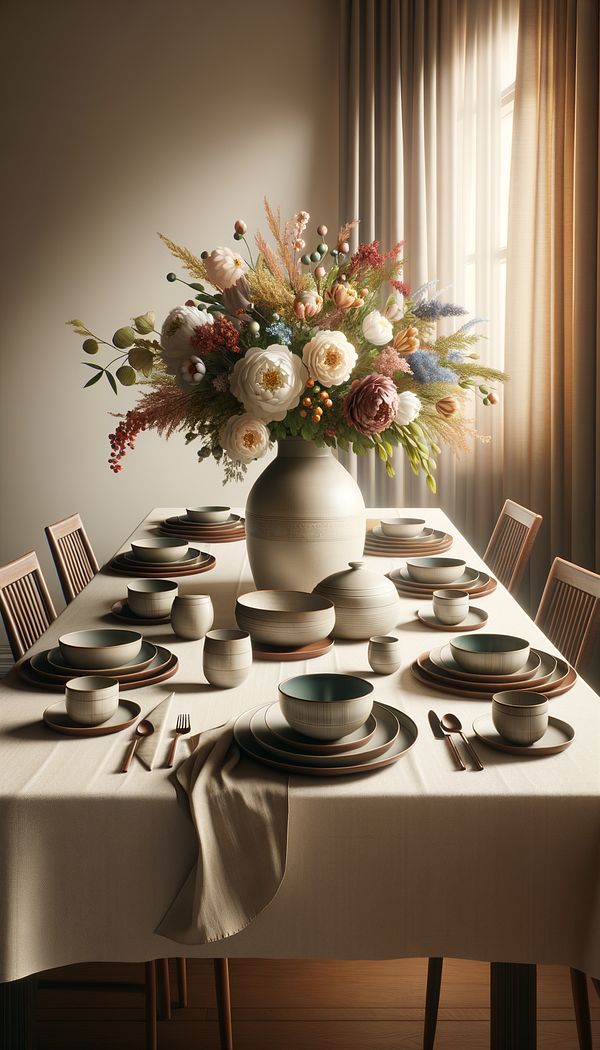What is Ceramic?
Ceramic refers to objects made from clay that have been shaped and then hardened by heat.
Description
Ceramic is a versatile material widely used in the interior design industry for a variety of applications, ranging from functional items such as tiles and dinnerware to decorative pieces like vases and sculptures. Made primarily from clay, ceramics are shaped into desired forms before being fired at high temperatures in a kiln. This process not only hardens the material but also makes it more durable and, depending on the type of clay and glazes used, can add a rich variety of finishes, colors, and textures.
The beauty of ceramic lies in its diversity. Depending on the crafting techniques and treatments applied, it can sport a glossy finish, matte texture, or intricate patterns. This versatility makes ceramics a favorite among interior designers and homeowners alike, enabling them to infuse spaces with warmth, character, and a touch of handcrafted allure. Furthermore, the sustainability aspect of ceramics, being made from natural materials, adds to its appeal in contemporary interior design, reflecting a growing trend towards eco-friendly and enduring materials.
Usage
In interior design, ceramics are primarily used for floor and wall tiles in kitchens and bathrooms due to their water-resistant properties. They also serve as countertops, backsplashes, and even sinks. Beyond functional uses, ceramic items such as vases, lamps, and artwork add decorative elements to a room, providing texture, color, and artistry.
FAQs
-
How are ceramics made?
Ceramics are made by shaping clay into the desired form and then firing it at high temperatures in a kiln, which hardens and solidifies the material.
-
Can ceramic items be used outdoors?
Yes, certain ceramic materials, especially those designed for outdoor use, are durable enough to withstand weather conditions, making them suitable for outdoor tiles, pots, and sculptures.
-
Are ceramic materials sustainable?
Ceramics are considered an eco-friendly option in interior design due to being made from natural, abundant materials like clay. They also have a long lifespan, reducing the need for frequent replacements.
-
How can I incorporate ceramics into my home decor?
Ceramics can be integrated into home decor in numerous ways, such as through decorative objects like vases and sculptures, flooring and carpets in the form of tiles, and even furniture types with ceramic inlays or accents.
-
What's the difference between porcelain and ceramics?
While both are made from clay and fired in a kiln, porcelain is made from a more refined clay and fired at a higher temperature, resulting in a denser, more durable, and often more translucent material than regular ceramics.
-
How do I care for ceramic items?
Ceramic items should be cleaned with non-abrasive materials to avoid scratching the surface. For ceramic tiles, regular sweeping and mopping with mild detergents are recommended to maintain their appearance.
Practical Application
When incorporating ceramics into your interior design, consider the space and functionality. For areas prone to moisture, such as kitchens and bathrooms, ceramic tiles offer both aesthetic appeal and practicality. In living areas, ceramic decorative items can add depth and interest. Always consider the overall colour scheme and design style to ensure ceramic elements complement your space harmoniously.
-
Furniture Types599 articles
-
Decorative Techniques322 articles
-
Decorative Objects240 articles
-
Materials & Textiles360 articles
-
Flooring & Carpets48 articles
-
Dutch DresserA Dutch Dresser is a type of sturdy and practical furniture piece consisting of shelves above and drawers or cupboards below.
-
Roman ShadeA Roman shade is a type of window covering made of fabric that folds into pleats when raised.
-
Traverse DraperyTraverse drapery refers to a type of curtain designed to be opened and closed by pulling a cord.
-
GreigeGreige is a color that blends gray and beige tones.
-
PressboardPressboard is a type of engineered wood product made from wood fibers bonded together under heat and pressure.
